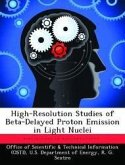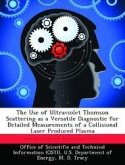Long distance propagation, or filamentation, of short, intense laser pulses is possible through the balance of two effects: self-focusing, when a nonlinear index of refraction of air is induced by high intensities, and de-focusing, due to the plasma created by the pulse. Applications for filamentation include areas such as remote sensing and directed energy. A split-step spectral propagation simulation is used to model the behavior of a high intensity ultraviolet laser pulse propagating through air. Convergence of femtocecond duration collapses that form on the leading edge of the pulse in the time domain is achieved with an increase in the multi-photon ionization coefficient. Through an analysis of the relative sizes of each term in the propagation equation, a lack of plasma present at the leading edge of the pulse is found to cause these collapses. Results for a more recent value of the electron--positive ion recombination rate are compared to results from a higher value used in previous work. A linear stability analysis shows inherent instability of the pulses in all cases. The inclusion of group velocity dispersion is shown to increase stability at high temporal frequencies except at zero spatial frequencies. A run similar to an experiment claiming UV filamentation is shown to be artificially limited by numerical parameters.








